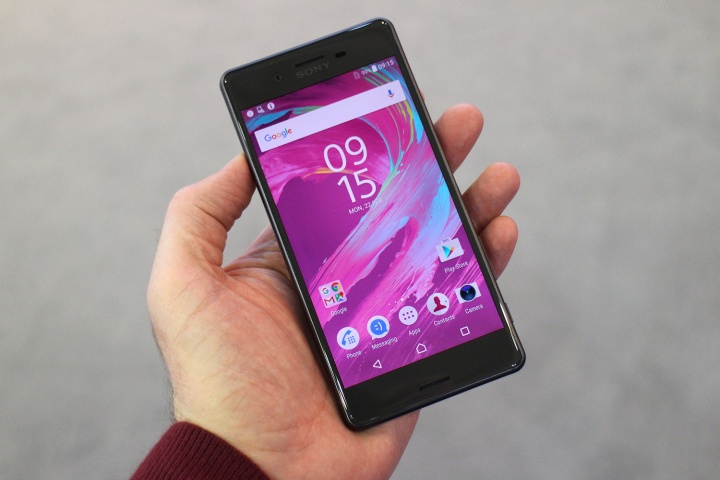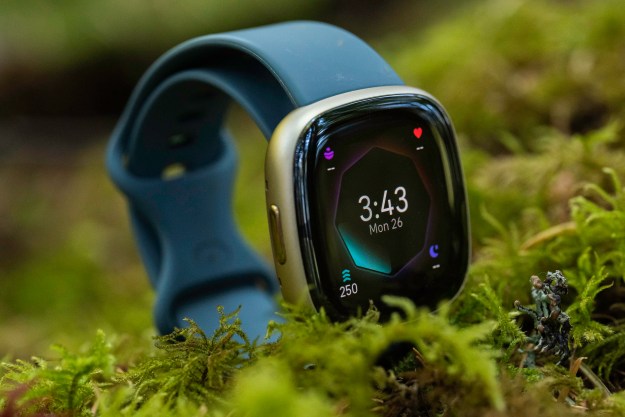It used to be that January’s Consumer Electronics Show (CES) set the tone for the entire year in tech – but it doesn’t tell the whole picture anymore. We won’t see the hottest smartphones, tablets, and wearables until Mobile World Congress, now the largest mobile show in the world, in February. That’s when the entire picture of the future crystalizes.
Fortunately, we’re on our way back from Barcelona as we speak, and we just wiped the fog off our crystal ball. Here are 16 digital trends you will want to know about in 2016.
The year of VR | Age of accessories | Where’s the wearables? | Twinning phones
The year of VR

Last year, wearables were the hot new category making waves. This year, it’s virtual reality. At the end of 2015, Samsung put VR on the map with Gear VR – a product that is leaps and bounds ahead of any other phone-based VR headset. It gave Galaxy phone owners high-quality virtual reality for 100 bucks. At CES, Facebook showed its final Oculus Rift headset, and at MWC we got final launch details for our favorite VR system, the HTC Vive, which actually lets you walk around and interact with virtual worlds.
But HTC wasn’t alone. It feels like almost every major tech company, from LG to SK Telecom, has its own VR product, service, or technology. What we don’t know is how many people actually want to use VR on a daily basis. The success or failure of Oculus and Vive will give a strong indication how much virtual reality the world can stomach.
Age of accessories
In the last couple years, a lot of smart eyewear and smartwatches hit the market – emphasis on “a lot.” Oddly, wearables were rare this year at MWC. In 2016, we’re seeing a few struggling wearables, but a lot more power players turning to new accessories, like the 360-degree action cams by LG and Samsung, or little robotic toys, like the Sony Agent. These devices are all Bluetooth enabled and designed to easily sync up with smartphones. And many are tangentially related to VR.
Where are the wearables?
Seriously, where are they? If it weren’t for the very fun Avegant Glyph, we would have struggled to find any solid wearables at MWC this year. CES and other shows haven’t been much better, either. Some watch makers are finally adding basic smart features to their watches, and fitness bands are still creeping along, but it looks like we’ll have to wait until the second half of 2016 before we get to see the next generation of smartwatches, or any other wearable products that try something fresh.
It’s hard to tell phones apart
Outside of the swappable modules on LG’s G5, we haven’t seen a lot of outward innovation in the design of phones. Most major phones we’re seeing have a 5- to 5.7-inch screen, are made of metal, have fingerprint readers, and don’t have a lot of new, unique apps on them. They all look fairly similar. Yet, we’re seeing more of them than ever. The major smartphone makers appear to agree on what a smartphone should look like and how it should operate.
Specs are over | Customers are heard | High-res audio | The rise of China
Spec sheets don’t matter anymore
Exterior designs aren’t the only thing becoming homogenous. All in all, flagship, mid-range, and budget phones have very similar spec sheets, as well. Everyone is advancing, but they’re all doing it together and without much celebration.
With the exception of Xaiomi, none of the major phone makers really emphasized their specs when launching their key products at MWC. It was all about fun experiences and how the devices stir emotion. Some booths didn’t even have spec sheets next to their products, because they probably didn’t think most folks would care. In other words, nobody had much to brag about because no one was pushing the envelope.
Companies are listening to customers

Surprisingly, instead of announcing thinner phones with more gimmicks, some of the largest brands instead just tried to make better phones. The Samsung Galaxy S7 and S7 Edge are two good examples. These devices brought back features that were on older Galaxy phones, but canceled, like a waterproof body and a MicroSD slot. On top of that, Samsung took extra care to make its Edge phone more comfortable to hold and stuff significantly larger batteries in each device. Why? Last year, customers complained about battery life. Low-light photography was also a pain point that LG and Samsung, among others, are attempting to address.
High-res audio quietly arrives

A lot of phones have had some form of support for high-quality audio for several years, but what types of files they supported, and how, was never standardized. Thankfully, that’s changing. Big phones like the Sony Xperia X Performance, LG G5, and Galaxy S7 have upped their audio game, though some of them are shy to talk about it. Our own Ryan Waniata explored their performance in our first smartphone sonic showdown.
The rise of China
Chinese phone makers aren’t yet huge in the United States, but they probably will be before you know it. One of the hottest unveilings at this year’s show was Xaiomi’s Mi 5. Lenovo is also pushing into the west with its Motorola acquisition and upcoming phone that will feature Google’s Tango project. Huawei also made a splash with its MateBook Windows 10 tablet and is beginning to develop real brand recognition in the United States. Finally, ZTE and Gionee also continue to stay in the game. It will be a while before they’re household names, but their importance continues to escalate worldwide.
Cute robots | Tablet identity crisis | Where are the apps? | RIP Windows Phone
Robots are getting so adorable
Robots are getting an image makeover, and they’re becoming a lot cuter, funnier, and more helpful. At MWC alone, we saw several robots designed to help out.
Sony’s Xperia Agent is a helper robot that sits in your living room or kitchen, like an Amazon Echo. But it makes cute noises, looks at you, and generally wants to make you smile every time you see it. Pepper the robot can speak in emotional tones and even appears to wear eye liner to soften its face. In the back of our heads, we know the robotic revolution may not end well for humanity, but how can we say no to those eyes?
Tablets continue their identity crisis

Tablets are still on the struggle bus, and they aren’t getting off anytime soon. A few years ago, they were the next greatest thing in computing, but today they can hardly find a reason to exist.
At MWC, there weren’t a ton of tablets, and the ones there really tried hard to find reasons to exist. Huawei’s MateBook tablet has a keyboard case and wants to be a Surface-like 2-in-1 PC. It even runs Windows 10. BQ is also attempting to go the PC route, with its M10 Ubuntu tablet, but others, like ZTE’s S Pro Plus blend silly features like a projector. One company showed us some new tablets targeted toward completely different target users in ever size. The 8-inch, for instance, was strictly for kids, and the 10-inch was for businesses. But he actual differences between these tablets were minimal.
Where are the apps?

Seriously, where are they? There was an entire app hall at MWC, and there were no new apps for ordinary folks. CES was similar. There just aren’t a lot of exciting apps hitting phones these days. The creative energy that once filled the iOS and Android app stores has moved on. Maybe the geniuses who used to make apps are working on VR, too. Or they’re all on Kickstarter making devices.
RIP Windows Phone

We can count the number of new Windows Phones we’ve seen this year on one hand. The death of Nokia as a phone maker stole the last breath of life in Microsoft’s long-troubled OS, and Windows 10 has done nothing to turn the tide. Like BlackBerry 10 and FireFox OS, it’s sad to see alternatives to the Android-iOS duopoly perish. We don’t advise you invest in Windows 10 for Mobile devices anytime soon.
King Zuckerberg | Sony’s lost | 5G, graphene, and Li-Fi | Mobile + cars
Mark Zuckerberg is even more powerful than you imagined

Facebook CEO Mark Zuckerberg is the biggest name in tech right now, and his appearances and actions during MWC prove it. Zuck spoke at Samsung’s Galaxy S7 event and keynoted Mobile World Congress. He outlined his plans to make virtual reality social (Facebook owns Oculus) and during the show Facebook launched a complete redesign of the Like button, which adds emojis and emotions. Zuckerberg’s news rivaled anything going on in mobile, and every tweet and article we wrote about him seemed to blow up.
The strangest moment, cementing his rock star status, was the incredible mob of journalists that rushed up to the stage to take pictures when he entered the stage. This was despite the fact that they should have been wearing Gear VR glasses and watching the show. Samsung was in the middle of holding the largest mass VR demonstration in history.
Sony has no direction
What is going on with Sony? We love plenty of its products, but this year especially, it doesn’t seem to know what it wants to be at all. Like a Roomba navigating a filthy living room, it just keeps bouncing off the walls.
Sony launched several new concepts, but it rarely seems prepared to talk about them. At MWC, it had a robot Amazon Echo-like speaker device, three new Xperia phones, a futuristic table projector, and no real details on how most of these products worked or when they’d be available. And earlier this year, it held a massive, and lengthy press conference where it had next to no products to announce, or things to say. We’re having a hard time figuring out what Sony stands for these days.
Prepare to hear about 5G, graphene, and Li-Fi

Sometimes tech revolutions are about a single product. Other times, technology takes years to bubble up, but has a big impact when it does. Drones, 3D printing, and hoverboards are all in the news a lot, but in the decade to come, prepare to read about 5G mobile networks — which could be faster than any Internet you’ve probably ever used – and Li-Fi, which is like Wi-Fi but uses light instead of radio waves to transmit data. And graphene may be the material that holds the next generation of super-flexible tech products and gadgets together. It will be several years before you’ll see any of these technologies in the wild, but all three of them could herald huge changes.
Mobile is talking over cars
Cars are slowly changing into giant tech toys. This year, Ford even began calling itself a mobility company as it showed off its new apps to control various car functions. Samsung unveiled its Auto Connect system, and Volvo, Summit, and Qualcomm also made announcements.
Car companies are learning that if they want to get ahead, they’ll need to demonstrate their tech chops. This year, we even noticed that CES had bigger and better car announcements than the Detroit Auto Show in January.



